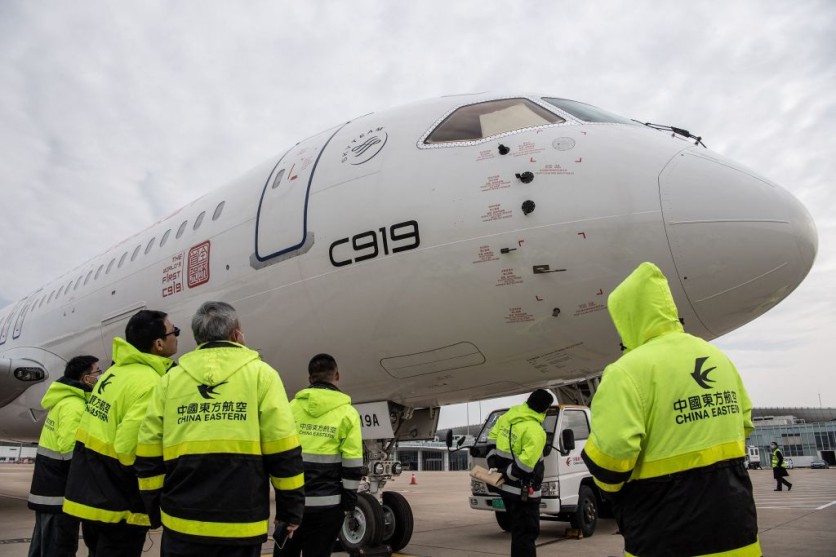China has unveiled its groundbreaking achievement in the aviation sector with the revelation of the world's largest civil wind tunnel complex, aiming to surpass industry giants Boeing and Airbus.

China Eastern Airlines staff members check a Commercial Aircraft Corp of China (COMAC) C919 aircraft, China's first domestically produced large passenger jet, after it lands at Wuhan Tianhe International Airport during a verification flight, in China's central Hubei province on January 16, 2023.
Locally Constructing World's Largest Wind Tunnel
Emerging from 16 years of clandestine development, China's 18 state-of-the-art wind tunnels have been disclosed in a paper published in the Chinese journal Acta Aerodynamica Sinica.
Interesting Engineering reported that this monumental infrastructure surpasses the combined capacity of similar facilities in the United States and Europe. Since 2007, China has made substantial investments in the construction of these wind tunnels, distributed across the country.
Serving as crucial testing grounds for scientists and engineers, these facilities played a pivotal role in the development of China's latest passenger aircraft, the C919. This marks China's entry into the realm of large civil jet aircraft without allegations of imitating Western designs.
China's accomplishment in the aviation sector stands out as its 18 state-of-the-art wind tunnels surpass their Western counterparts. Notably, China's largest wind tunnels exceed eight meters in size, in stark contrast to those in the U.S. and EU, which are below five meters.
These advanced facilities play a pivotal role in addressing diverse challenges in aircraft development, covering aspects such as aerodynamics, extreme operating conditions, icing, vibration, noise, and flight control systems.
Competing with Boeing 737, Airbus A320
The impact of China's achievement is evident in the performance of the C919, surpassing competitors like the Boeing 737 and Airbus A320.
With a more spacious interior, superior aerodynamics reducing drag, and minimized cabin noise during cruise, the C919 has demonstrated excellence in terms of both performance and efficiency.
South China Morning Post indicates an impressive 10% reduction in overall operating costs, including fuel consumption, compared to its Western counterparts. While the C919 is still in its early stages of commercial operations, it marks a technological triumph.
Developed entirely from scratch using China's cutting-edge wind tunnels, the aircraft stands as a fundamental and original technological breakthrough for the non-Western world, as per senior engineer Wu Junqiang's paper.
Beyond aviation, the colossal wind tunnel complex underscores China's broader ambitions, extending beyond aircraft production to reshape relations with the West. The construction of such an extensive infrastructure reflects a strategic move aimed at achieving breakthroughs amid great power competition.
This ambitious endeavor represents a departure from China's earlier approach, notably seen in the 1980s with the cancellation of the Y-10 passenger plane project.
Also Read : Boeing Starliner's Flight Pushed Back Again - Could Be Ready to Fly First NASA Crew by March
Critics argued for purchasing mature products from the West rather than reinventing the wheel. However, China's current accomplishment signifies a commitment to independent innovation.
Overcoming technological bottlenecks over the past two decades, wind tunnel builders in China have established a comprehensive aircraft research and development technology system with fully independent intellectual property rights.
Looking forward, China's ambitions extend to providing better support for aerodynamic stealth requirements, flying wing layout, and wing-body fusion layout.
Related Article : First China-Made C919 Passenger Jet Finally Delivered-A New Milestone for Chinese Aviation!

ⓒ 2025 TECHTIMES.com All rights reserved. Do not reproduce without permission.




